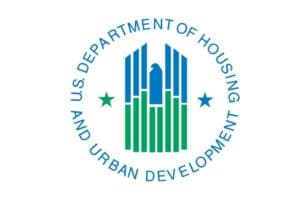Rural Housing

House Finance Subcommittee Holds Hearing on Rural Housing Service
The House Commmittee on Financial Services’ Housing and Insurance Subcommittee held an oversight hearing May 19 to examine the performance, challenges and budget priorities of the Rural Housing Service (RHS).

Ginne Mae Increases Loan Maximum for Rural Multifamily Developments
Ginnie Mae announced that effective June 1, 2015, USDA Section 538 Multifamily loans with a maximum loan amount of 70% of total development costs will be eligible for pooling into Ginnie Mae mortgage-backed securities (MBS). This is an increase from the previously allowable maximum loan amount of 50% of the total development costs.

USDA Outlines Rural Voucher Program for FY 2015
A recent notice in the Federal Register outlines how U.S. Department of Agriculture (USDA) will operate the Rural Development Voucher Program in FY 2015.

NH&RA Joins Call to Support Affordable Housing Funding
NH&RA signed-on to support the National Low Income Housing Coalition’s campaign to urge lawmakers to to act quickly to stop budget caps and sequestration from taking effect in the upcoming fiscal year.

Senate Approps Approves $36 Billion in Discretionary Spending for HUD
The Senate Appropriations Committee recently approved its fiscal year (FY) 2015 Transportation-HUD spending bill by a measure of 29-1. The draft bill would provide $36 billion in discretionary spending for Housing and Urban Development programs, offsetting receipts estimated by CBO at $9.8 billion, which allows for program funding levels totaling $45.8 billion.

House Approps Approves Cuts to HUD Programs; CNI and HOME Programs Impacted
On May 21, the full House Committee on Appropriations approved the fiscal year (FY) 2015 appropriations bill for the Department of Transportation, Department Housing & Urban Development (HUD) and Related Agencies by a vote of 28-21. There were no material amendments adopted in full committee markup.

House THUD Subcommittee Proposes Cuts to HUD Programs; CNI and HOME Programs Impacted
The U.S. House of Representatives Transportation-HUD (THUD) Appropriations Subcommittee on May 5, 2014 released its draft fiscal year (FY) 2015 appropriations legislation for the Department of Housing and Urban Development (HUD).

Fiscal 2014 Appropriations Compromise Presents Winners & Losers
A recently released bipartisan spending measure funds U.S. Department of Housing and Urban Development (HUD) programs at $45.46 billion, increasing funding for certain programs such as the Project-Based Rental Assistance and Tenant Based Rental Assistance programs over FY 2013 post-sequestration levels, but dramatically altering the landscape for others, in particular the Rental Housing Demonstration (RAD) program.

Obama’s FY 2015 Budget Requests $46.7 Billion for HUD Programs
On March 4, President Barack Obama introduced his fiscal year (FY) 2015 budget, requesting a total of $46.7 billion for Department of Housing and Urban Development (HUD) programs, as well as significant policy proposals aimed at improving the Low-Income Housing Tax Credit (LIHTC) program and a proposal to modify and permanently extend the New Markets Tax Credit.

Harvard Joint Center for Housing Studies Releases New Report at Washington Event
On December 9, 2013, the Joint Center for Housing Studies of Harvard University (JCHS) released a new report on U.S. renters and rental housing characteristics, conditions, and trends during an event at the Newseum in Washington, D.C. The report, America’s Rental Housing: Evolving Markets and Trends, describes how the 2008 recession has impacted rental housing trends. Currently, there are 43 million rental households, representing 35% of Americans — the highest rate in more than a decade. Additionally, a disproportionate amount of lower-income families and individuals living in rental housing pay an excessive share of their income towards rent. Because of the vast changes in housing, many consider America to be experiencing the worst crisis today in renter affordability.

USDA RD Provides Underwriting Guidance for Multi-Family Housing Transactions
The U.S. Department of Agriculture Rural Development has issued an unnumbered letter (UL) clarifying underwriting guidance for Transfer and Multi-Family Housing Preservation and Revitalization (MPR) loans and grants.

NCHMA 2013 Annual Meeting: Conference Materials Available!
All conference materials, PowerPoint presentations, relevant articles, reports, memos, etc. from the 2013 NCHMA Annual Meeting are available for download.